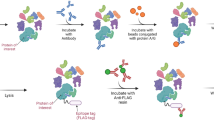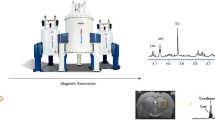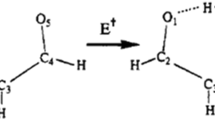Abstract
The BRCA1 carboxyl-terminal (BRCT) domain, an evolutionarily conserved structural motif, is ubiquitous in a multitude of proteins spanning prokaryotic and eukaryotic organisms. In Mycobacterium tuberculosis (Mtb), BRCT domain plays a pivotal role in the catalytic activity of the NAD+-dependent DNA ligase (LigA). LigA is pivotal in DNA replication, catalyzing the formation of phosphodiester bonds in Okazaki fragments and repairing single-strand breaks in damaged DNA, essential for the survival of Mtb. Structural and functional aspects of LigA unveil its character as a highly modular protein, undergoing substantial conformational changes during its catalytic cycle. Although the BRCT domain of Mtb LigA plays an essential role in DNA binding and protein–protein interactions, the precise mechanism of action remains poorly understood. Unravelling the structure of the BRCT domain holds the promise of advancing our understanding of this pivotal domain. Additionally, it will facilitate further exploration of the protein–protein interactions and enhance our understanding of inter domain interactions within LigA, specifically between BRCT and the Adenylation domain. In this study, we demonstrate the overexpression of the BRCT domain of Mtb LigA and conduct its analysis using solution NMR spectroscopy, revealing a well-folded structure and we present the nearly complete chemical shift assignments of both backbone and sidechains. In addition, a secondary structure prediction by TALOS N predicts BRCT consisting of 3 α-helices and 4 β-sheets, closely resembling the typical structural topology of most BRCT domains.


Similar content being viewed by others
Data availability
The chemical shift data for BRCT domain of Mtb LigA is available in BMRB under accession number 52237.
References
Berjanskii MV, Wishart DS (2005) A simple method to predict protein fexibility using secondary chemical shifts. J Am Chem Soc 127(43):14970–14971
Callebaut I, Mornon JP (1997) From BRCA1 to RAP1: A widespread BRCT module closely associated with DNA repair. FEBS Lett 400:25–30
Davies J, Davies D (2010) Origins and evolution of antibiotic resistance. Microbiol Mol Biol Rev 74(3):417–433
Dwivedi N, Dube D, Pandey J, Singh B, Kukshal V, Ramachandran R, Rama PT (2008) NAD(+)-dependent DNA ligase: a novel target waiting for the right inhibitor. Med Res Rev 28:545–568
Delaglio F, Grzesiek S, Vuister GW, Zhu G, Pfeifer J, Bax A (1995) NMRPipe: a multidimensional spectral processing system based on UNIX pipes. J Biomol NMR 6:277–293
Fernandes A, Williamson A, Matias PM, Moe E (2023) Structure/function studies of the NAD+-dependent DNA ligase from the poly-extremophile Deinococcus radiodurans reveal importance of the BRCT domain for DNA binding. Extremophiles 27(3):26
Gong C, Martins A, Bongiorno P, Glickman M, Shuman S (2004) Biochemical and genetic analysis of the four DNA ligases of mycobacteria. J Biol Chem 279:20594–20606
Khanam T, Afsar M, Shukla A, Alam F, Kumar S, Soyar H, Dolma K, Pasupuleti M, Srivastava KK, Ampapathi RS, Ramachandran R (2020) M. tuberculosis class II apurinic/ apyrimidinic-endonuclease/3’-5’ exonuclease (XthA) engages with NAD+-dependent DNA ligase A (LigA) to counter futile cleavage and ligation cycles in base excision repair. Nucleic Acids Res 48(8):4325–4343
Lee JY, Chang C, Song HK, Moon J, Yang JK, Kim HK, Kwon ST, Suh SW (2000) Crystal structure of NAD+-dependent DNA ligase: Modular architecture and functional implications. EMBO J 19:1119–1129
Lee W, Tonelli M, Markley JL (2014) NMRFAM-SPARKY: enhanced software for biomolecular NMR spectroscopy. Bioinformatics 31:1325–1327
Miggiano R, Morrone C, Rossi F, Rizzi M (2020) Targeting genome integrity in mycobacterium tuberculosis: from nucleotide synthesis to DNA replication and repair. Molecules 25(5):1205
Peña-Guerrero J, Fernández-Rubio C, García-Sosa AT, Nguewa PA (2023) BRCT domains: structure, functions, and implications in disease-new therapeutic targets for innovative drug discovery against infections. Pharmaceutics 15(7):1839
Shah NS, Wright A, Bai GH, Barrera L, Boulahbal F, Martin-Casabona N, Drobniewski F, Gilpin C, Havelkova M, Lepe R, Lumb R, Metchock B, Portaels F, Rodrigues MF, Rusch-Gerdes S, Deun AV, Vincent V, Laserson K, Wells C, Cegielski JP (2007) Worldwide emergence of extensively drug-resistant tuberculosis. Emerg Infect Dis 13:380–387
Shen Y, Bax A (2013) Protein backbone and sidechain torsion angles predicted from NMR chemical shifts using artifcial neural networks. J Biomol NMR 56:227–241
Sotgiu G, Ferrara G, Matteelli A, Richardson MD, Centis R, Ruesch-Gerdes S, Toungoussova O, Zellweger JP, Spanevello A, Cirillo D, Lange C, Migliori GB (2009) Epidemiology and clinical management of XDR-TB: a systematic review by TBNET. Eur Respir J 33:871–881
Shuman S, Lima CD (2004) The polynucleotide ligase and RNA capping enzyme superfamily of covalent nucleotidyltransferases. Curr Opin Struct Biol 14:757–764
Srivastava SK, Dube D, Tewari N, Dwivedi N, Tripathi RP, Ramachandran R (2005a) Mycobacterium tuberculosis NAD+-dependent DNA ligase is selectively inhibited by glycosylamines compared with human DNA ligase I. Nucleic Acids Res 33:7090–7101
Srivastava SK, Tripathi RP, Ramachandran R (2005b) NAD+-dependent DNA Ligase (Rv3014c) from Mycobacterium tuberculosis. Crystal structure of the adenylation domain and identification of novel inhibitors. J Biol Chem 280:30273–30281
Srivastava SK, Dube D, Kukshal V, Jha AK, Hajela K, Ramachandran R (2007) NAD+-dependent DNA ligase (Rv3014c) from Mycobacterium tuberculosis: novel structure-function relationship and identification of a specific inhibitor. Proteins 69:97–111
Wang LK, Nair PA, Shuman S (2008) Structure-guided mutational analysis of the OB, HhH, and BRCT domains of Escherichia coli DNA ligase. J Biol Chem 283(34):23343–23352
Wilkinson A, Day J, Bowater R (2001) Bacterial DNA ligases. Mol Microbiol 40:1241–1248
Wishart DS et al (1995) H, 13 C and 15 N chemical shift referencing in biomolecular NMR. J Biomol NMR. https://doi.org/10.1007/BF0021177
World Health Organization (2020) Global tuberculosis report 2023
Zhang X, Moréra S, Bates PA, Whitehead PC, Coffer AI, Hainbucher K, Nash RA, Sternberg MJE, Lindahl T, Freemont PS (1998) Structure of an XRCC1 BRCT domain: a new protein-protein interaction module. EMBO J 17:6404–6411
Acknowledgements
JV is thankful to ICMR, New Delhi for fellowship. Authors are thankful to DST for 700 MHz Facility of SAIF at CDRI. The CDRI communication number allotted to this manuscript is 10775.
Funding
This research was funded by the Institutional research funding of CSIR-Central Drug Research Institute to R.S.A.
Author information
Authors and Affiliations
Contributions
JV and RSA designed the experiments; JV prepared the samples; JV and RSA collected the NMR experiments; JV analysed the experiments; JV and RSA discussed the results; JV wrote the manuscript, RSA edited and approved the final version.
Corresponding author
Ethics declarations
Conflict of interest
The authors declare no conflict of interest.
Additional information
Publisher's Note
Springer Nature remains neutral with regard to jurisdictional claims in published maps and institutional affiliations.
Rights and permissions
Springer Nature or its licensor (e.g. a society or other partner) holds exclusive rights to this article under a publishing agreement with the author(s) or other rightsholder(s); author self-archiving of the accepted manuscript version of this article is solely governed by the terms of such publishing agreement and applicable law.
About this article
Cite this article
Vaishnav, J., Ampapathi, R.S. 1H, 15N and 13C resonance backbone and side-chain assignments and secondary structure determination of the BRCT domain of Mtb LigA. Biomol NMR Assign 18, 105–109 (2024). https://doi.org/10.1007/s12104-024-10175-5
Received:
Accepted:
Published:
Issue Date:
DOI: https://doi.org/10.1007/s12104-024-10175-5




